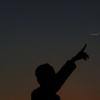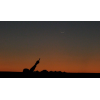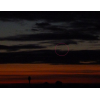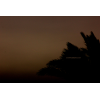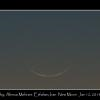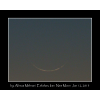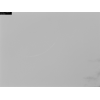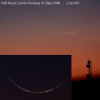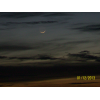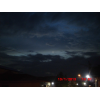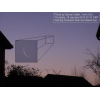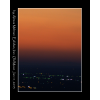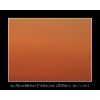Visibility of Rabee' Al-Awwal Crescent 1434 AH
- When to Observe Rabee' Al-Awwal Waxing (NEW) Crescent ?
- Rabee' Al-Awwal Waxing (NEW) Crescent Observation Results
- The OFFICIAL First Day in Different Countries
- When to Observe Safar Waning (OLD) Crescent ?
- Safar Waning (OLD) Crescent Observation Results
When to Observe Rabee' Al-Awwal Waxing (NEW) Crescent ?
The geocentric conjunction (Geocentric New Moon) will occur Inshalla on (Friday 11 January 2013) at 19:44 UT.
Sighting the new crescent on (Friday 11 January 2013) and (Saturday 12 January 2013) is shown in the below graphs using the program Accurate Times by Mohammad Odeh according to Odeh criterion. Where:-
- It is impossible to see the crescent from the areas located under the red color. Because either the Moon on this day sets before the Sunset and/or the topocentric conjunction occurs after the Sunset.
- The crescent is expected to be seen by optical aid only from the areas located under the blue color.
- The crescent is expected to be seen by optical aid from the areas located under the magenta color. In these areas the crescent could be seen by naked eye if the atmospheric conditions are superb and the observer is experienced.
- The crescent is expected to be easily visible by naked eye from the areas located under the green color.
- The crescent cannot be seen from uncolored areas, even though the Moon sets in these locations after the Sunset and the topocentric conjunction occurs before the Sunset, but the Moon is not sufficiently illuminated in order to be seen as crescent even by optical aid.
- Kindly notice that the below graph shows the possibility of seeing the crescent from areas between 60 degrees north of Equator down to 60 degrees south of Equator.
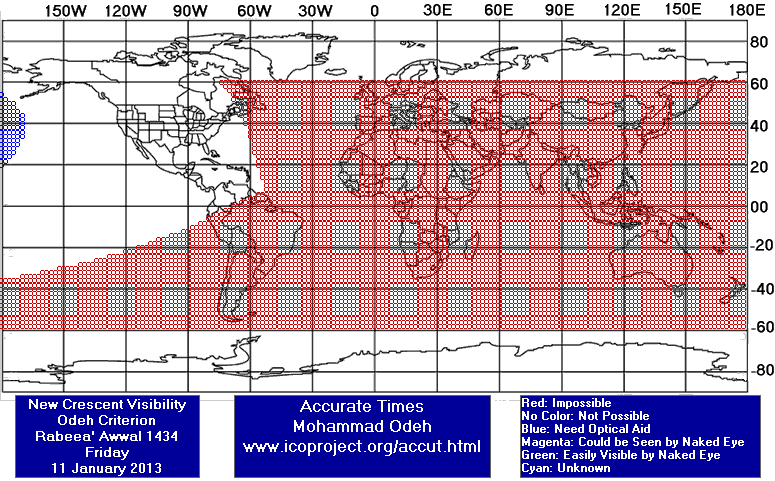
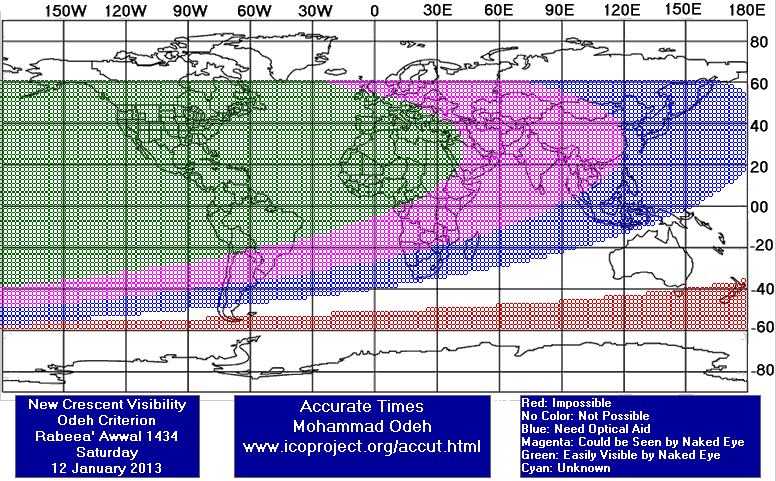
According to the Universal Hejric Calendar (UHC), which is based on the calculated crescent visibility, the start of this month in the Eastern Region will be on Sunday 13 January 2013 and in the Western Region will be on Sunday 13 January 2013. Kindly notice that the UHC is a pre-calculated calendar, which adopts a certain criterion to start the new Hejric month. Your country/organization might adopt different criterion to start the new Hejric month. So it is highly advised to read the UHC website before giving any judgment.
- Results of seeing the crescent, and the first day of the month in different countries will be added here Inshalla as we receive the reports from ICOP's members. If you wish to be a member in ICOP, or to know more about it, kindly click here.
Rabee' Al-Awwal Waxing (NEW) Crescent Observation Results
Fri 11 January 2013
Tunisia
Sat 12 January 2013
Algeria
Mr. Hocine Chikh Aissa said: "16 observers were present in N'tissa station with tow binoculars. (07X50) The new crescent of Rabee Awwal 1434 was seen by naked eyes and by a binocular, The sky was Clear and It was cold; First vision was at 18:12. mawlid nabaoui charif..."
Hungary
Dr. M. Al-Majari said: "السلام عليكم تمت رؤية الهلال بالمنظار ثم بالعين المجردة رغم الغيوم المتحركة على الأفق الغربي في جنوب دولة المجر عند الحدود الكرواتية د. أبو آمنة"
Iran
Mr. Alireza Mehrani said: "New Moon = = = = = = Location: Esfahan, Iran Latitude: 32° 35' 26.59" N Longitude: 51° 38' 11.78" E Elevation: 2070 meters from sea level Time zone: +3.5 Observer & photographer: Alireza Mehrani Date: Saturday January 12, 2013 (Dey 23, 1391) Temperature: 5 C° (41 F°) Wind: Calm Humidity: 24% Barometer: 850.6 mb Visibility: 16 km Topocentric and local time values from "Moon Calculator" (Refrac off): Crescent first observation through 15x80 binoculars: Time: 17:28LT (13:58 UT) Moon Alt: 7° 43' 41" Sun Alt: - (2° 47' 18") Elongation: 10° 31' 00" Rel Azi: - (0° 02' 23") Moon Width: 0.28' Moon Phase: 1.01% Moon Age: 18h 15m after conjunction Crescent first observation through naked eyes: Time: 17:43LT (14:13 UT) Moon Alt: 4° 56' 46" Sun Alt: - (5° 41' 47") Elongation: 10° 38' 37" Rel Azi: 0° 09' 27" Moon Width: 0.28' Moon Phase: 1.03% Moon Age: 18h 30m after conjunction "
Nigeria
Dr. Z.Sani Mustapha said: "The crescent was not visible to severe haze. Stars were not visible. Since on the 28th Safar the moon was not sighted on a clear eastern horizon but was sighted on the 27th as reported, today 12th January is the beginning of R.Awwal"
Oman
Eng. Ammar Salim Al-Rawahi said: "لله الحمد لقد حاولنا كفريق رؤية الهلال بالعين المجردة وبسبب الغيوم الجزئي لم نستطع رؤيته بالعين المجردة ولا بالتلسكوب، ومع أخذ عدد من الصور عن طريق السي سي دي كاميرا اتضحت بعض الصور بوجود الهلال."
Prof. Mohammed Al-Bussaidi said: "The crescent was sighted by CCD from 17:19 (local Time). And later on at after sunset by 3 minutes we saw the crescent by telescope."
Pakistan
Mr. Alam Sultan said: "Today (Saturday, 12 January 2013= Pakistan: 29 Safar 1434) on my request, nearly 100 persons ( members of the moon-sighting committees of our institute "JAMIA-TUR-RASHEED" + my friends + their companions) tried to sight the moon all over Pakistan at more than 25 places but due to bad weather, the moon could not be sighted. All places were hazy, cloudy or rainy except 2 places. If the moon had been sighted on January 12 = 29th Safar, it would have been fourth consecutive month of 29 days in Pakistan. Note 1: Chairman of central official moon sighting committee of Pakistan mufti Munee-bur-Rahman told me on my mobile phone that as they also did not receive any positive report hence they officially announced that Sunday 13th January 2013 is 30th Safar 1434 AH and Monday 14th January 2013 is 1st Rabee'-ul-Awwal 1434 AH in Pakistan Note 2: After some days, inshaallah, a detailed report of this observation will be available in Urdu."
Saudi Arabia
South Africa
Tanzania
Mr. Zaffar Sheriff said: "Crescent altitude of 7.7 at sunset was not seen, though there were little windows of clear skies. We finish 30 days of Safar, and commence Rabiul Awwal on Monday."
United Arab Emirates
United Kingdom
Eng. Qamar Uddin said: "On Saturday, 12 January 2013 (29 Safar 1434 AH) many people from throughout the UK have attempted to sight the crescent moon (Hilal) of Rabiul Awwal after sunset. Most of the groups were unable to sight the Hilal, as most places were cloudy. However, the York group of observers were able to sight the 21 hrs old moon at 16.47 hrs GMT by naked eye from the York Astronomical Society (YAS) Observatory, which was first sighted by binoculars (15x) at 16.41 hrs by one of the astronomers in-between a patch of thick clouds (see attached photos). Therefore, the Wifaq/Batley Ulama have decided that the month of Safar 1434 AH will have 29-days and the month of Rabiul Awwal 1434 AH will start from Sunday 13 January 2013, Insha-Allah. The York group of observers included: Maulana Imran Lunat, Vashiullah Bodiyat, Hafiz Yusuf Mayet, Hafiz Ismail Suleman and Yusuf Mulla, all from Batley plus Qamar Uddin and about 10 YAS members from York. Please note: the Mufassiroon (commentators of the Quran) have stated that it is Fardh-e-Kifayah (communal obligation) to sight the crescent moon (Hilal) by the human eye, every month to start the Islamic lunar months, based on the Tafsir of the following verses: 1. 'They ask you (O Muhammad) about the crescent moons. Say: These are signs to mark fixed periods of time for mankind and for the pilgrimage.' (Quran 2:189) 2. 'Verily, the number of months with Allah is twelve (in a year)' (Quran 9:36). The sighting of this waxing crescent moon (Hilal) has marked the end of the New moon Phase (Mahaq) of Safar, which was started by sighting of the last waning crescent moon (Urjoonil Qadim) on Thursday 10 January 2013. This means, the Mahaq (invisible period) of last month was about 2.5 days for the UK. "
United States
Dr. Javad Torabinejad said: "The western horizon was partly cloudy; I waited so long for the moon to appear in a clearing. My first sighting was through a pair of binoculars. Right after, I saw the moon with naked eye; the crescent was thin but at that time, I could have spotted it without the use of the binocular. The horns were at 3:30 and 8:00 O'clock (3:30;5:00;8:00)."
Sun 13 January 2013
Indonesia
Tunisia
Mr. Bilel Besbes said: "تمت المراقبة خلف البنايات. وقد تمت رؤية الهلال بسهولة لعدم وجود غيوم كالعادة بل كان هناك ضباب طفيف جدا غير معتبر. وقد اعلن مفتي الديار التونسية ان السبت 12 جانفي/يناير الموافق ل30 صفر 1434 مكمل لصفر و الاحد 13 جانفي/يناير هو اول ايام شهر ربيع الاول وبالتالي المولد النبوي الشريف سيكون يوم 24 جانفي/يناير. و مولدا نبويا سعيدا على كل مسلمي العالم."
The OFFICIAL First Day in Different Countries
Sat 12 January 2013
1 . Nigeria
Sun 13 January 2013
1 . Indonesia
2 . Iran
3 . Oman
4 . Saudi Arabia
5 . Tunisia
6 . United Kingdom
Mon 14 January 2013
1 . Pakistan
2 . South Africa
3 . Tanzania
When to Observe Safar Waning (OLD) Crescent ?
The geocentric conjunction (Geocentric New Moon) will occur Inshalla on (Friday 11 January 2013) at 19:44 UT.
Sighting the OLD crescent on (Friday 11 January 2013) and on (Thursday 10 January 2013) is shown in the below graphs using the program Accurate Times by Mohammad Odeh according to Odeh criterion. Where:-
- It is impossible to see the OLD crescent from the areas located under the red color. Because either the Moon on this day rises after the Sunrise and/or the topocentric conjunction occurs before the Sunrise.
- The crescent is expected to be seen by optical aid only from the areas located under the blue color.
- The crescent is expected to be seen by optical aid from the areas located under the magenta color.. In these areas the crescent could be seen by naked eye if the atmospheric conditions are superb and the observer is experienced.
- The crescent is expected to be easily visible by naked eye from the areas located under the green color.
- The crescent cannot be seen from uncolored areas, even though the Moon rises in these locations before the Sunrise and the topocentric conjunction occurs after the Sunrise, but the Moon is not sufficiently illuminated in order to be seen as crescent even by optical aid.
- Kindly notice that the below graph shows the possibility of seeing the crescent from areas between 60 degrees north of Equator down to 60 degrees south of Equator.

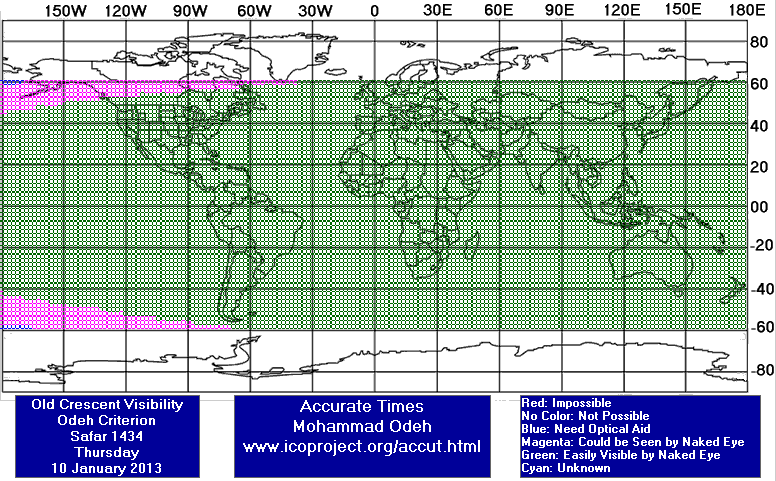
Safar Waning (OLD) Crescent Observation Results
Thu 10 January 2013
Bahrain
Eng. Ali Majeed Al Hajari said: "كان منظر الهلال جميلا في الافق الشرقي من مملكة البحرين والقريب نسبيا من كوكب الزهرة والذي وقع اسفل القمر . . وبعد فترة جدا قليلة جدا اكتسح الضباب كل ارجاء البحرين مما لم نتمكن من رؤية القمر بعد الضباب."
Nigeria
Tunisia
United Kingdom
Eng. Qamar Uddin said: "On Thursday 10 January 2013, the eastern horizon before sunrise was totally foggy/cloudy. I was not expecting to see the waning crescent at all. However, when I went outside to look at the Southeast direction, I was pleasantly surprised to see the waning crescent on top of the foggy horizon with the glare of the sun raising below it slowly. I quickly took a few photos at about 07:45 hrs GMT (see attached photo), before the crescent faded into the glare of the raising sun about half an hour before sunrise. This was the last phase of the Safar 1434 AH moon (Urjoonil Qadim), as mentioned in the Quran: "And (as for) the moon, We have measured for it mansions (to traverse) till it returns like the old dried curved date stalk (Urjoonil Qadim)." [Quran 36:39]"
Fri 11 January 2013
Iran
Mr. Alireza Mehrani said: "Old Moon = = = = = = Location: Esfahan, Iran Latitude: 32° 35' 41.42" N Longitude: 51° 38' 55.56" E Elevation: 1849 meters from sea level Time zone: +3.5 Observer & photographer: Alireza Mehrani Date: Friday January 11, 2013 (Dey 22, 1391) Temperature: -4 C° (24.8 F°) Wind: 25.2 km/h Humidity: 38% Barometer: 843.6 mb Visibility: +10 km Topocentric and local time values from "Moon Calculator" (Refrac off): Crescent first observation through 15x80 binoculars: Time: 06:25 LT (02:55 UT) Moon Alt: 0° 02' 16" Sun Alt: - (8° 48' 46") Elongation: 9° 30' 41" Rel Azi: 3° 29' 50" Moon Width: 0.23' Moon Phase: 0.84% Crescent last observation through 15x80 binoculars: Time: 06:48 LT (03:18 UT) Moon Alt: 4° 15' 39" Sun Alt: - (4° 18' 47") Elongation: 9° 19' 17" Rel Azi: 3° 39' 40" Moon Width: 0.22' Moon Phase: 0.80% Moon Age: 16h 25m before conjunction "
Nigeria
Dr. Z.Sani Mustapha said: "The crescent was not sighted. If it were to be sighted, this could be around 6.50 a.m"
